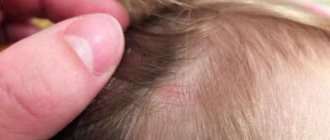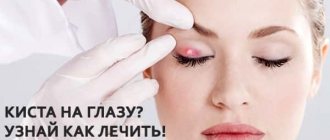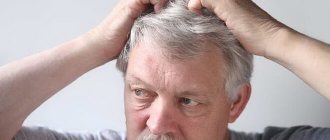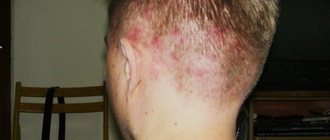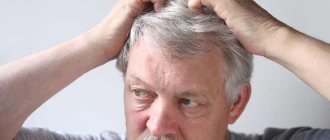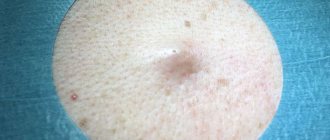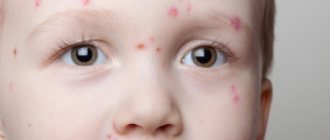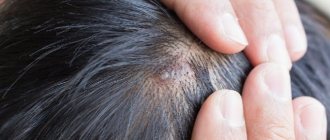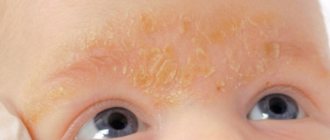Infections and allergies are the main causes of acne formation.
All skin imperfections are associated with internal diseases, as the founders of traditional Chinese medicine argued several thousand years ago.
Modern immunologists and allergists, in particular Professor V.A. Revyakina, have proven the dependence of rashes on hormonal problems and allergic reactions. Watery and other pimples in medicine are called “rash elements” and are distinguished by size and reasons for formation. For example, with insect bites, contact dermatitis, hormonal and metabolic disorders, blisters appear that look like a dome without a cavity.
Bubbles or vesicles are small pimples with a diameter of 1–5 mm, filled with liquid. Occurs with chickenpox, herpes simplex and herpes zoster, allergic dermatitis, eczema, dyshidrosis. They can be more or less painful, depending on the body's reaction to the infection or allergen.
With improper treatment or lack of therapy, water pimples become inflamed. The cavity inside is filled with bacteria, toxins, and leukocytes. If you scratch the blisters and bubbles, squeeze out the pustules, they will not heal for a long time. Red spots and scars then remain on the skin.
First aid for blisters on the head in the hair
To reduce discomfort, you need not touch the blisters, do not peel off the crusts from them and do not squeeze out the contents of the inflamed follicles, even if there is itching and discomfort.
You need to switch to children's hypoallergenic shampoo, wash your hair with gentle, not sudden movements, so as not to damage the scalp.
In order to reduce discomfort, you need to wash your hair with menthol shampoo or make a mask from a strong decoction of mint with a few drops of tea tree oil and menthol, if the scalp does not dry out.
It will reduce discomfort and restore your comfort. To prepare it, you will need:
- 50 strong and cold decoction of mint;
- 10 drops each of tea tree and menthol oils;
- 1 egg white.
Mix all ingredients until smooth, then apply to scalp. The mask should be worn for 30 minutes and washed off with cool water.
Using a special clay hair mask, which you can buy at a pharmacy or store, also helps. Although it does not completely eliminate fungus or inflammation, it significantly reduces discomfort.
Attention! During treatment, your doctor may prescribe you antifungal gels, ointments, and shampoos. During treatment, you should use only these products.
If you decide to make masks or rinse your scalp with herbal decoctions, apply them only to dry and clean scalp.
How to Care for Blisters
First of all, comb your hair gently so as not to injure your scalp. It is better not to use combs with sharp teeth. Use special antifungal shampoos and gels if necessary.
At this time, try not to make tight ponytails, knots or complex hairstyles, and do not use hairpins or hairpins.
Blisters need to be lubricated with special ointments and gels prescribed by the doctor.
It is also worth making regular masks with tea tree, hair clay and menthol - they reduce inflammation. And, of course, keep your hair clean and wash your hair regularly, maybe more often than before.
Is it worth scratching blisters or not and what can it lead to if you scratch them?
No, you should never scratch them. You can introduce an infection into the wound and inflammation will spread throughout the scalp.
How to treat allergic dermatitis, watch this video:
Causes
Factors that cause blisters on the skin and how to deal with them
Skin rashes in the form of blisters with liquid appear in adults as a reaction to the influence of negative factors from within the body or from the external environment. The cause may be rubbing with clothing, kitchen utensils, garden tools, thermal and chemical burns. But the most serious group is disorders of the functioning of organs and systems of an immune, metabolic, and nervous nature. Internal imbalance becomes the background for diseases of various etiologies.
Contact dermatitis
Skin irritation occurs due to contact with certain substances, for example:
- household chemicals, especially alkaline,
- hygiene, cosmetic products,
- medications,
- metals,
- synthetics,
- plants,
- animals, insects.
Even uncomfortable air or water temperatures can cause blisters on sensitive skin. Redness, swelling, itching, burning of the epidermis are the first signs of an impending rash. Small transparent bubbles grow into large bullae. They quickly burst and dry out. If contact with the irritant is interrupted quickly, everything will be limited to slight redness, which will soon resolve. In severe cases, weeping, poorly healing areas of erosion are formed.
Allergic blisters on the skin: causes, types, methods of treatment
A malfunction of the immune system leads to the fact that the body perceives foods, drinks, and medications that are generally harmless as dangerous to health. As a result, a reaction of rejection occurs - inflammation of the skin, profuse dry and watery rashes like urticaria on the face, hands, folds, and legs.
Toxicoderma
Individual intolerance in the form of a reactive rash and eczema can manifest itself to any group of medications, 120 types of food allergens, and metals in production (nickel, cobalt, chromium). Symptoms of toxicoderma disappear in the absence of the action of the irritant and quickly return when the slightest dose enters the body.
Bacteria such as streptococci and staphylococci provoke diseases with vesicular and pustular rashes:
- pyoderma - purulent inflammation of the epidermis,
- vulgar mixed impetigo - a rash of phlyctenas (bubbles) with purulent filling and rough crusts hiding erosions,
- ecthyma is an inflammatory-purulent process in which conflicts deepen erosion over the entire thickness of the skin.
Viral infection
Scatterings of small blisters often turn out to be a manifestation of herpes infections - chickenpox, shingles. Herpes virions are usually transmitted by airborne droplets.
Chickenpox, which is easily experienced by children, causes a lot of suffering in adulthood. The pink spots that appear at the first stage are covered with itchy and painful vesicles. The blisters burst, revealing wet ulcers. Before the wounds have time to become covered with crusts, more and more lesions appear. Chickenpox brings high fever, chills, loss of appetite and sleep. Scratching can introduce purulent bacteria into the wounds.
Herpes zoster is especially difficult. Thick blistering rashes in bands are located along the line of nerve fibers affected by herpes virions. Severe neuralgic pain haunts the patient not only in the acute phase of pathogenesis, but also many months later.
Fungal infection
Various fungi constantly parasitize human skin. Their pathogenic activity is restrained by the immune system. Depletion of protective resources and skin injuries create favorable conditions for the activation of mycotic diseases. The trichophyton fungus causes small blisters between the toes of very sweaty feet, which quickly grow into bullae.
Flaky epidermorphyton provokes large blisters on the palms, groin, and armpits. Less commonly, the middle or ring fingers are affected. The bubbles quickly flatten in the center, leaving a convex, peeling border around the perimeter. Dermatophyte molds can spread to areas containing keratin: the hairy area, the stratum corneum of the epidermis, and nails. A clear example of rashes can be seen in the photo below.
Depression and stress, thyroid dysfunction, diabetes mellitus disrupt the passage of electrical impulses, metabolism and hormonal control of all processes in the body. All this negatively affects the condition of the protective skin barrier. The epidermis changes its physical and chemical structure, resulting in various types of water blisters.
Diseases that arise due to the aggression of protective bodies against protein compounds of the body are called autoimmune.
- In old age they suffer from chronic bullous pemphigoid. The skin on the arms, legs, and stomach is covered with blisters that are filled to the limit. The foci of their accumulation are located symmetrically.
- A recurrent disease, dermatitis herpetiformis, causes high fever, disrupts intestinal functions, and leads to depression. A polymorphic rash (various in contours and size) appears on the knees, elbows, from the back of the head to the buttocks. The unbearable itching is accompanied by a feeling of burning, tingling, and crawling. Dühring's dermatitis may indicate a malignant tumor within the body.
- Pemphigus is less common, but is more severe. Its multiforme vesicles sprinkle the body, quickly merging into extensive foci.
Vesicles do not always signal infection. For example, painful, watery blisters on the hands may be the result of a heat or sunburn. When the sap of the hogweed plant comes into contact with the skin under the influence of ultraviolet radiation, similar traces also appear. The affected skin must be lubricated with wound healing creams.
However, there are other common reasons:
- Hives. Dermatitis is characterized by pink, flat-raised blisters on the skin, reminiscent of nettle burns. The rash appears as a result of an allergic reaction, but can be a symptom of internal disorders in the body. The acute form of the disease disappears after two weeks. Chronic pathology occurs with relapses and periods of remission for many years.
- Contact dermatitis. The reaction occurs after direct skin contact with the allergen. Colorless water blisters on the body itch, accompanied by swelling, redness, pain and burning. Pink spots appear on the body; as the process progresses, the color may turn red-brown. Antihistamines are used to relieve discomfort.
- Chicken pox. The varicella-zoster virus is airborne and causes a watery rash all over the body with fever. The disease mainly occurs in children under 7 years of age. After this, lasting immunity is developed for life, so adults rarely become infected. Initially, pink spots form, transforming into papules, and then into vesicles, surrounded by a red halo. The blisters quickly dry out and become covered with red-brown crusts, which disappear after 2–3 weeks. The fever goes away within 7 days. At this time, bed rest is recommended. Antihistamines are indicated to reduce itching. Heat and increased sweating increase discomfort. To prevent bacterial complications, elements of the rash are treated with brilliant green and Castellani’s solution.
- Shingles. The culprit is the same varicella-zoster virus. It is believed that the pathogen remains in the nerve cells of the body after chickenpox, provoking relapses in the form of rashes on the body on one side. But you can get shingles. The patient's temperature rises, weakness occurs, itching and pain appear in the areas of future lesions. After 3-4 days, pink, swollen spots appear, followed by vesicles with clear liquid. Peripheral lymph nodes swell. The bubbles dry up after a week and disappear. But postherpetic neuralgia (pain) remains for several months. Treatment of the pathology is not required, but it is important to prevent the development of complications. Antiviral drugs, painkillers, antidepressants and corticosteroids are used for this.
- Eczema. Watery blisters on the skin itch and appear due to poor functioning of the gastrointestinal tract, liver and kidneys, mechanical stress, immune deficiency, infection or allergy, and genetic predisposition. True eczema is characterized by small vesicles that quickly turn into erosions and become covered with crusts. The process begins with symmetrical damage to the face, hands, and then spreads throughout the body. Severe itching disrupts quality of life and sleep. The doctor determines the course of treatment individually depending on the form of the disease. Patients are not recommended to wear synthetic clothing or eat allergenic foods.
- Simple herpes. The infection is characterized by blisters on the mucous membranes of the nose and lips. They itch, and after the contents spill out, they turn into painful ulcers. Within two weeks, the rash dries up and disappears without a trace. Antiviral ointments are indicated to prevent the spread of infection.
- Epidermolysis bullosa. Blisters and erosions form on the skin and mucous membranes due to the increased sensitivity of epithelial tissues to mechanical stress. Blisters appear on the hands, feet, and sometimes cover the entire body. Exacerbation of hereditary disease occurs in the summer. There are no radical ways to treat the pathology, but symptomatic remedies are used. The main goals of therapy are to prevent the growth and bacterial infection of lesions.
- Pemphigus. An autoimmune disease affects the skin and mucous membranes. The prognosis for recovery is unfavorable, since even timely therapy does not exclude death.
If watery blisters on the body caused by an allergy are not touched, then after a few days they begin to dry out on their own. But when the negative impact of the irritant is not eliminated, the rash quickly spreads to healthy areas. It is important to identify which foods, medications or external factors provoke the reaction. Viral pathologies require symptomatic treatment. Bacterial infections require antibiotic therapy.
Diagnostics
The appearance of infection is accompanied by the following symptoms:
- increased body temperature;
- headache;
- weakness;
- burning and itching, rash, redness of the affected area;
- there may be vomiting.
This virus is accompanied by severe pain, which is transmitted through nerve endings. After a few days it goes away and blisters appear. Often they merge, the spot is hidden behind the hair. The most vulnerable places are the back of the head and the area near the temples. A month after the onset of the disease, the symptoms subside, although the pain sometimes remains for a long time.
We determine the disease by the appearance of acne
Typically, with viral infections, red spots of varying diameters first appear on the skin, then watery blisters form within one or several days. Allergic acne is most often pink blisters of different diameters. They appear a few minutes or days after exposure to the stimulus and can quickly disappear without treatment.
How to determine the disease by the nature of the rash:
- pink vesicles with a depression in the center - molluscum contagiosum;
- severely itchy watery pimples on the lips and wings of the nose - herpes simplex;
- groups of red blisters under the armpits, on the sternum, back and neck - herpes zoster;
- quickly opening and drying out pimples on the head and torso - chickenpox;
- itchy watery blisters between the fingers, scabies in the navel area;
- skin redness, local swelling, blisters - allergic dermatoses.
With dyshidrosis, a rash forms on the hands and feet as a result of clogging of the sweat glands. Miliaria, in the form of a scattering of watery pimples, also appears due to blocked sweat glands. Such rashes are usually localized in the folds of the skin, on the neck, back, and groin.
Prevention
Consider protecting your immune system from herpes. Also, do not forget about the nervous system. Lead a healthy and active lifestyle, never sit still, do exercises in the morning. Avoid alcoholic drinks and cigarettes. Try to eat healthy foods, but not genetically modified foods.
Herpes on the head in the hair is caused by HSV type 3 Varicella zoster, from the activation of which no one is immune. More often, the problem occurs in people who have previously had chickenpox. And although the disease is considered contagious, infection transmitted by direct contact is less common. Children show signs of chickenpox, and adults are affected by shingles, localized in the scalp, face or body.
The chickenpox virus remains in the human body for life. It may not make itself felt at all if suitable conditions are not created. But weakened immunity, old age and associated hormonal changes are the main reasons for the virus to enter an active state.
Predisposing factors that contribute to the awakening of the virus:
- Weakening of the body's immune defense associated with old age. Women who have crossed the 60-year mark are at risk. Men get herpes on the head much less often.
- Constant tension in the nervous system and exposure to frequent stress have a negative effect on the nerve endings in whose cells the herpes virus “dormants.”
- Physical injuries force the body to devote all its strength to restore health and cause a decrease in immunity. As a result, herpes zoster is often activated, affecting the scalp with rashes.
- Various infectious diseases significantly weaken the body, contributing to the manifestation of herpes lesions.
- Oncological diseases and their corresponding treatment: chemotherapy, radiation, hormonal drugs activate herpes of the scalp, which seeks to take advantage of the right moment.
- Physical inactivity and insufficient physical activity of a person leads to a weakening of a person’s muscular corset, which creates suitable conditions for the development of infection.
- Bad habits - smoking and alcoholism, associated with poor nutrition - contribute to a decrease in the functionality of the main vital internal organs and weaken the immune system. As a result, the body becomes more easily infected with the herpes virus.
Correctly treating acne with watery contents
The formation of blisters and other rash elements on the body is only one of the symptoms of infectious diseases. Other signs also appear: fever, runny nose, sore throat and stomach pain.
Symptomatic treatment for mild viral infections:
- Anti-inflammatory and painkillers (orally) - Ibuprofen, Nimesulide.
- Solutions for treating watery blisters - potassium permanganate, brilliant green, Castellani liquid.
- Antihistamines (orally) - Cetirizine, Loratadine, Desloratadine.
- Cooling and soothing lotions, gels (externally).
Doctors always prescribe antihistamines in the form of drops or tablets for allergic acne. They quickly eliminate itching, inflammation and swelling of the skin. To restore intestinal microflora in case of allergies, take probiotics Lactobacterin, Linex, Bifidumbacterin.
External therapy for blisters for allergic diseases:
- Ointments based on corticosteroids Advantan, Cutivate, Flucinar, Elokom, Sinaflan.
- Combined drug Hyoxysone (antibiotic hormonal substance).
- Local antiseptics, for example, a solution of lemon juice, an infusion of mint, celandine, and sage.
Pimples with watery contents due to dyshidrosis and prickly heat are treated with Zinc ointment, creams Desitin, Bepanten, Depanthenol. If the itching intensifies, use external agents with corticosteroids.
It is important to maintain personal hygiene and arrange air baths for the affected skin.
Scabies are eliminated with benzyl benzoate (ointment or emulsion). Doctors also prescribe external agents with permethrin, spregal aerosol and sulfur ointment. To get rid of itching, you can take antihistamine tablets or drops at night.
Unofficial medicine recipes
To boost immunity, teas from medicinal plants are used: ginseng, rosea, echinacea, ginger. To prepare, pour a teaspoon of raw material into a glass of boiling water. The liquid is infused for 5-10 minutes. To improve the taste, add a slice of lemon and honey.
The following plants have an antiviral effect and can be used as compresses and lotions:
- raw garlic;
- essential oil of fir, tea tree, rosemary, thyme.
Lotions made from celandine, St. John's wort, and string significantly speed up the healing of ulcers.
Herpes of the scalp is the most difficult to treat due to problematic access to the affected area.
The main cause of the disease is infection with the Varicella Zoster strain, or HSV-3. This type of herpes virus also affects adults.
Having had chickenpox once, the body receives lifelong immunity to the pathogen, but the virus remains forever in the nerve plexuses. As soon as the body’s immune forces weaken, the virus becomes active and causes inflammation of any node of the nervous system.
On the head, a herpes infection occurs when the virus infects the trigeminal nerve near the ear or the superior orbital branch.
Methods for treating watery blisters with herpes
Many types of blistering rashes are idiopathic, meaning their causes are unknown. Therefore, there are practically no specific drugs. Treatment is selected according to symptoms, taking into account the general condition of the body.
First of all, surface preparations are used in the form of ointments, gels, and creams.
- Ointment with zinc oxide disinfects, prevents suppuration, dries weeping, and softens inflamed skin.
- Lamisil, Clotrimazole, Diflucan in ointment form, Pimafucin cream have a depressing effect on fungi.
- Antibacterial ointments Triderm and Baneocin help cure streptoderma.
- To neutralize severe allergies due to contact dermatitis and toxicoderma, hormonal ointments Advantan and Sinaflan are used.
The basis of therapy is broad-spectrum antiviral drugs:
- Valtrex,
- Valaciclovir,
- Acyclovir,
- Famvir.
In severe cases of the disease, immunomodulators are included in the course of therapy.
